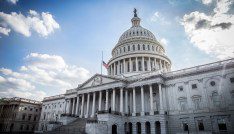From a bankruptcy perspective, the pandemic has unfolded differently than many expected. Prior economic crises have caused sharp upswings in bankruptcy filings. The 2007-2009 crisis was true to form, with business bankruptcy filings doubling during this time, to 60,837 in 2009 from 28,322 in 2007.1 Given that governments almost completely shut down the American economy in 2020, an even greater surge seemed likely. Many observers predicted a massive wave of bankruptcies.2 Bankruptcy scholars and bankruptcy organizations sprang into action, calling for Congress to increase the capacity of the bankruptcy system (primarily by increasing the number of bankruptcy judges) and to assure access to financing for companies that filed for bankruptcy.3
David Skeel
S. Samuel Arsht Professor Corporate Law – University of Pennsylvania Law School
The big surprise of the current pandemic is that the great bankruptcy wave of 2020 never materialized. The number of very large corporate bankruptcies increased,4 but overall business bankruptcies went down rather than up (from 22,780 in 2019 to 21,655 in 2020), and the decrease in consumer bankruptcy filings was even more dramatic (752,160 in 2019, 522,808 in 2020, a 28% drop).5 The most obvious reason for the surprising decline in bankruptcy filings was the enormous amount of stimulus money that buoyed the economy, including well over $1 trillion of business lending capacity in the CARES Act of March 2020 and subsequent boosters of the small business portion of the legislation. In addition, the buoyancy of the stock market provided access to equity capital for firms that might have found themselves in bankruptcy under other circumstances.
Although the pandemic confounded the typical pattern of rising bankruptcies during an economic crisis, in another respect the pandemic has proved true to form: It has provoked a populist backlash. During the 2007-2009 crisis, populist movements emerged on both ends of the political spectrum—the Tea Party on the right and Occupy Wall Street on the left—in each case, protesting bailouts of large financial institutions.
The current crisis has prompted another populist backlash, as can be seen in controversies that have arisen in the Purdue Pharma opioid bankruptcy and in the bankruptcy of USA Gymnastics after revelation of horrendous sexual abuse by former team doctor Larry Nassar. Unlike the Tea Party and Occupy Wall Street, the current outrage is directed at the bankruptcy process itself. There is a growing populist perception that Chapter 11—the bankruptcy provisions used to restructure financially distressed businesses—has become deeply unfair. It benefits insiders—the “haves”—at the expense of outsiders—the “have nots.”
The closest analogy to the current populist backlash comes not from the most recent pre-pandemic crisis but much earlier, during the Great Depression.6 After emerging in the second half of the nineteenth century, the American approach to corporate reorganization (originally known as “equity receivership”) came to be dominated by large Wall Street banks such as J.P. Morgan and large Wall Street law firms such as Cravath, Swaine & Moore. The banks that had underwritten a class of bonds would offer to represent the investors who bought the bonds in negotiations with a financially distressed railroad or other business. In the 1930s, New Deal reformers such as William Douglas—a Yale law professor who became chairman of the Securities & Exchange Commission and later a Supreme Court Justice—concluded that the Wall Street banks and lawyers were profiting (through the fees they charged and by assuming positions of control) at the expense of the investors they purposed to represent. The reformers ripped control from Wall Street by persuading Congress to enact, and President Roosevelt to sign, the Chandler Act of 1938. The Chandler Act prohibited bankers or lawyers that had represented a company before bankruptcy from representing it after the bankruptcy filing, which meant the company’s underwriters could no longer run the reorganization process. Within a few years, Wall Street had disappeared from bankruptcy.
The pandemic has spurred a remarkably similar populist backlash. Even before the pandemic, concerns were growing about current developments in the restructuring of large corporations. Critics complained about companies’ ability to file for bankruptcy almost anywhere they want to (“forum shopping”), insider control of the restructuring process, the payment of bonuses to managers before and during bankruptcy, and the use of bankruptcy in cases like Purdue Pharma to resolve not only the obligations of the company itself but also of individuals or entities like the Sacklers who have not filed for bankruptcy themselves. During the pandemic, discontent with current bankruptcy practice has grown considerably.7 Lawmakers have introduced a spate of bills, each of which has been prompted by populist dissatisfaction with current Chapter 11 practice.
Related Content
This report describes and comments on four practices that have prompted populist backlash. Several other controversial features of current practice that are not considered here are referenced in the footnote below.8
Bankruptcy venue
The first and most longstanding magnet for populist outcry is a company’s choice of where to file its bankruptcy case—known as bankruptcy “venue.” Under the current filing rule a company can file for bankruptcy in any of the following locations: where its headquarters are; its principal assets are; it is domiciled; or an “affiliate” of the company has already filed for bankruptcy.9 Although this sounds like a limited set of options, in practice a company can file its bankruptcy case almost anywhere in the country due to the “affiliate” option. If a Pennsylvania company wished to file for bankruptcy in South Dakota, it could simply create a new, wholly owned entity in South Dakota and have the new entity file for bankruptcy in South Dakota. The Pennsylvania company could then file for bankruptcy in South Dakota since an “affiliate” is in bankruptcy there.
During the decade after the current bankruptcy code was enacted in 1970s, many large corporate debtors filed for bankruptcy in the Southern District of New York. Starting in 1990, Delaware joined New York as another popular filing location for large corporate debtors. The late 1990s saw the first serious challenge to this “forum shopping.” Critics complained that New York and Delaware judges lured companies to their districts by, among other things, allowing bankruptcy lawyers to charge high fees, quickly approving all of the debtor’s initial (“first day order”) requests, and by authorizing rapid sales of the debtors’ assets.10 They also complained that New York and Delaware were too inconvenient for employees and small creditors of companies whose operations were in other states, which it made it impossible for small parties to participate.
Venue reform was never enacted, but it continued to percolate, with support from both Democrats and Republicans. In recent years, several other locations have joined New York and Delaware as popular venues, including Richmond, Virginia and most recently the Southern District of Texas (Houston). The new twist in the controversy is that debtors in several of these locations can pick not just the district where they file but the particular judge.11 The Southern District of Texas has made this easy by committing to assign all large Chapter 11 cases to two judges in the district. In Southern District of New York, a debtor that files its bankruptcy case in White Plains was, until late last year, certain to get Judge Robert Drain, the only Southern District of New York judge sitting in White Plains.12 Purdue Pharma appears to have filed its case there for this reason.
Congress is currently considering legislation sponsored by Senators Cornyn (R-TX) and Warren (D-MA) that would ban venue shopping.13 Under the proposed legislation, large corporate debtors would generally be required to file for bankruptcy in the state where their headquarters or principal assets are.14 The reform would remove domicile—the state where a debtor is incorporated—as a venue option, and the debtor could only file for bankruptcy where an affiliate has filed if the affiliate owns a majority of the debtor’s stock—that is, if the affiliate is the parent corporation.
As often is the case with populist measures, the proposed legislation has beneficial features but also deeply problematic ones. Some of the forum shopping concerns are well taken. Debtors should not be able to pick particular judges within a district and permitting a debtor to file anywhere an affiliate has filed is too easy to manipulate. But removing a debtor’s ability to file in its domicile would be seriously counterproductive. The loser here would be Delaware, where most large corporations are incorporated. Not only is the debtor’s state of domicile an obvious filing location for a large corporation, but substantial empirical evidence suggests that debtors that file for bankruptcy in Delaware file there because of the expertise of Delaware’s bankruptcy judges.15
Third party releases
Another contentious practice is so-called “third party releases.” When a corporation completes a Chapter 11 reorganization, its prebankruptcy obligations are extinguished. The bankruptcy laws only contemplate that the corporate debtor’s obligations will be extinguished, however, not the obligations of other parties such as the directors or officers of the debtor or outside parties that were involved in wrongdoing by the debtor. In many cases, a corporate debtor asks the court to extinguish the obligations of some of these other parties, often in return for a payment by the third parties. In the Purdue Pharma case, the Sacklers agreed to pay roughly $4.5 billion in return for a court order extinguishing their potential liability related to the opioid crisis. When companies owned by private equity funds file for bankruptcy, the private equity sponsor often seeks this protection. Such a release is known as a third-party release.
Courts have struggled with the question of whether third party releases should be permitted. Except with corporate debtors that have asbestos liability, which are subject to a special rule,16 bankruptcy law does not speak to the question of whether third party releases are permissible. There are plausible arguments that they are constitutional and plausible arguments that they are not.17 Some courts allow them, while others do not. As a result, corporate debtors sometimes seek to file their case in a location where third-party releases are permitted.
The Sacklers’ efforts to obtain third party releases has triggered populist ire at their use. The bankruptcy judge approved the releases, although he required the debtor to reduce the scope of the releases. The district court subsequently reversed, concluding that the bankruptcy laws do not authorize third party releases.18 This decision has been appealed to the federal court of appeals.
As with bankruptcy venue, Congress is currently considering a dramatic intervention—legislation that would almost completely ban third party releases.19 Unlike with venue, there is a plausible argument for simply disallowing third party releases, even if they are legally permissible. The argument is that parties who have not themselves filed for bankruptcy should not be entitled to benefits of bankruptcy such as the extinguishing of debts. If the Sacklers or other third parties want this benefit, they need to file for bankruptcy.
The argument that third party releases should be permitted, at least on some occasions, is more pragmatic. Some argue that the treatment of nondebtors such as the Sacklers is so closely related to the debtor’s reorganization that the company’s financial distress cannot be resolved without also addressing potential claims against the nondebtors.20 Defenders of third party releases also contend that everyone, including victims, may be better off when a release is given in return for compensation by the third parties. The Sacklers have argued that if they were not given relief they would defend themselves vigorously outside of bankruptcy and victims would likely receive much less than the $4.5 billion the Sacklers have agreed to pay in the bankruptcy.
Rather than simply banning third party releases, a more nuanced response would be to insist that third parties seeking a release provide more transparency about their assets and ability to contribute.21 In a sense, they would be required to submit to some same rules about disclosure that would apply if they had filed for bankruptcy. Releases might also be limited to third parties that did in fact make a substantial contribution to the payment of victims or other creditors.
The “Texas Two-Step”
A third controversial practice is moving assets from one entity to another—often creating a “good company” with plenty of assets and an asset poor “bad company”—and then subsequently putting one or both of the entities in bankruptcy. Private equity funds often conduct internal reorganizations that are alleged to have this effect after they acquire a company, as in the Chapter 11 cases of the Chicago Tribune and Caesar’s.22 More recently, financially distressed debtors have taken advantage of a Texas law that appears to bless these transactions.23 The most controversial current example is Johnson & Johnson. Johnson & Johnson created a separate entity for its talc line of business, which is subject to numerous lawsuits, and put the separate entity into bankruptcy. This strategy has become known as the “Texas Two-Step.”
These transactions also have spurred populist backlash, both because they seem to involve manipulation by insiders and because the manipulators often are private equity funds, a bête noire of many populists. The proposed legislation to ban third party releases mentioned earlier also would amend bankruptcy law to require dismissal of any case involving a divisional merger that “had the intent or foreseeable effect of … separating material assets from material liabilities … and … assigning all or a substantial portion of those liabilities to the debtor.”24
As with the other issues, courts already have a more nuanced response available to them. When a company transfers assets from a “bad company” to a “good company” within its corporate structure and one or both later end up in bankruptcy, the transfer can be challenged as a “fraudulent conveyance” if the bad company did not receive adequate compensation for the assets it transferred. Fraudulent conveyance challenges were central to the Chicago Tribune and Caesar’s cases.
With a Texas Two-Step transaction, creditors also can challenge the bankruptcy case as having been filed in bad faith. If the transaction is abusive—if the bad company doesn’t have any real assets, for instance—the court can simply throw the case out.
Lender control of bankruptcy outcomes
Another controversial feature of current practice is lenders’ use of their financing agreement and related contracts to dictate the outcome of a Chapter 11 case. When Neiman Marcus filed for bankruptcy, it had signed a financing agreement with lenders to borrow $675 million, together with a so-called Restructuring Support Agreement that locked in a reorganization plan that required Neiman to transfer control to the lenders.25 Once the financing was approved, the case was over—no other outcome was possible.
If the market for providing financing to debtors in bankruptcy were competitive, lenders’ use of lending agreements to control the restructuring process might be less problematic. But the debtors’ current senior lenders have a monopoly, or nearly so, because other lenders fear that their loan will simply subsidize the senior lenders if the senior lenders have priority over the new lenders. Only if the court awards new lenders a “priming lien”—that is, priority over the current senior lenders—will new lenders offer to finance the debtor’s operations in bankruptcy. Bankruptcy courts have the power to provide priming liens if the senior lenders will be “adequately protected,” but they have been reluctant to do so.26
Although the monopoly of debtors’ current lenders has not yet gotten significant attention in policy circles, the issue is even more pervasive in practice. As with the issues discussed earlier, the problem does not require a legislative solution. Bankruptcy courts could facilitate competition by signaling a greater willingness to grant priming liens to new lenders and by declining to enforce contractual provisions that impede competition.27
A breaking point?
Complaints about insider control of Chapter 11 were rising even before the recent pandemic. The pressure has steadily increased during the pandemic, due both to the pandemic and to the confluence of highly controversial bankruptcy filings by Purdue Pharma, USA Gymnastics, the Boy Scouts, and others.
The long-term implications of the populist backlash triggered by these developments may depend on how bankruptcy professionals and bankruptcy judges respond to this unrest. If courts address the legitimate concerns raised by bankruptcy populists, the credibility and effectiveness of Chapter 11 may be restored. The Johnson & Johnson and Purdue Sackler cases offer hints of such a trend. With the talc entity of Johnson & Johnson, a bankruptcy judge transferred the case from North Carolina to New Jersey after allegations of forum shopping, and a motion to dismiss the case as having been filed in bad faith is pending. In Purdue Pharma, a district court struck down the controversial Sackler releases.
If these problems continue to fester, the populist backlash may lead to sweeping bankruptcy reform. Such reform is unlikely to be carefully tailored to the problems that prompted it. It could even destroy traditional Chapter 11 practice, much as the Chandler Act of 1938 brought an end to the reorganization framework that presaged current Chapter 11.
Although the pandemic did not overwhelm the bankruptcy system as many expected, it did bring a spate of preexisting conditions to light.28 The lesson for bankruptcy insiders, the “haves” of the bankruptcy process, seems to be “Physician, heal thyself,” before it’s too late.




